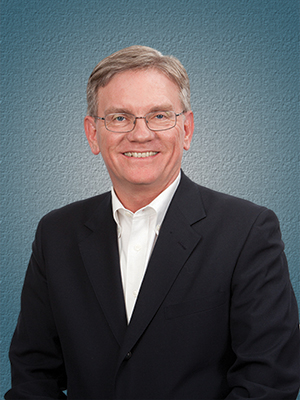When my father was diagnosed with prostate cancer, alarm bells sounded because my mother had died of metastatic colorectal cancer just a few years before. Surely, I thought, doctors would act quickly to remove my father’s prostate and save his life. Imagine my surprise when the oncologist recommended no treatment at all. My father had an indolent tumor, the doctor said, the slow-growing kind that doesn’t need immediate medical attention. Let’s just watch and wait, he advised.

Kevin McLaughlin Photo by Vera LaMarche
Watchful waiting, or a more rigorous approach sometimes called active surveillance, has become a common choice for men with low-risk prostate cancer. Research published in the July 7, 2015, Journal of the American Medical Association found that about 40 percent of men with low-risk prostate cancer chose active surveillance from 2010 to 2013, up from about 10 percent from 2005 to 2009.
But as Cancer Today contributing writer Heather Stringer discovered, while most of these men have the waiting part down pat, they haven’t quite mastered being watchful. (See “A Report Card on Active Surveillance.”) Stringer reports that a study published in the Dec. 1, 2015, Cancer found that “less than 5 percent of men undergoing active surveillance met the study’s definition of adequate follow-up: a doctor’s appointment and a PSA [prostate-specific antigen] test every six months and a second biopsy within two years of their initial diagnosis.”
Inattention to the requirements of active surveillance can have consequences. “Research shows that up to one-third of [prostate cancer] patients receive therapy after a median of two-and-a-half years of surveillance,” said one oncologist interviewed by Stringer. “Patients can’t let follow-up tests fall by the wayside.”
Active surveillance isn’t confined to patients with low-risk prostate cancer. Contributing editor Sue Rochman reports that a similar approach is being taken with patients who have certain types of slow growing blood cancers. (See “Treatment Is Waiting.”) Research has found that early treatment of these patients before symptoms develop doesn’t improve survival and can expose them to treatment-related side effects. These patients experience no gain and a lot of pain. But again, blood cancer patients who are waiting need to be watchful by adhering to the follow-up protocol recommended by their health care team.
Watchful waiting is sometimes referred to as watchful worrying. Anxiety and depression are common after a cancer diagnosis, whether the patient undergoes immediate treatment or begins a period of active surveillance. Cancer Today associate editor Kate Yandell interviewed psychiatrist Andrew Roth, who counsels prostate cancer patients to use “emotional judo” when facing their distress. (See “Learning Emotional Judo.”) The goal, Roth says, is to help men develop tactics to “turn down the volume on their anxiety and negative thoughts and flip back to the present” to minimize unhealthy and unproductive anxiety and depression.
For my father and the family, watchful waiting did involve worrying, but it turned out to be the right choice. He died in 2006 of causes unrelated to his prostate cancer. Of course, for some patients, quick action is required and active surveillance isn’t an option. Other patients may want to be treated for their cancer right now, even if active surveillance is possible. In the end, it should be the patient’s decision to make after consulting with his or her health care team, family members and friends. But if active surveillance is the choice, it’s vital for patients to follow a regular schedule of doctor visits and testing.




